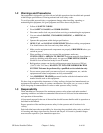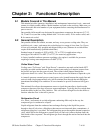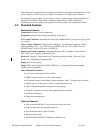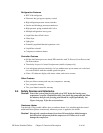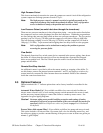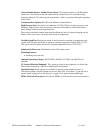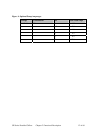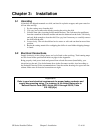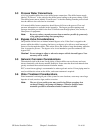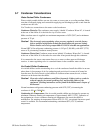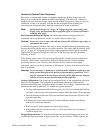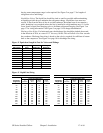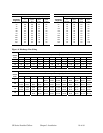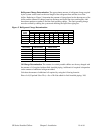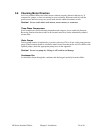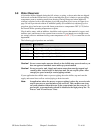GP Series Portable Chillers Chapter 3: Installation 14 of 64
3-3 Process Water Connections
All of our portable chillers have two chilled water connections. The chilled water supply,
labeled “To Process” is the outlet for the chilled water leading to the process being cooled.
The chilled water return, labeled “From Process” is the inlet leading from the process back
into the chiller to be cooled and re-circulated.
All external chilled water connections should be run full size to the process. Flow and
pressure information is available in the Appendix. The largest possible openings and
passages should be provided for the flow of chilled water through platens, dies, molds, or
other pieces of equipment.
Note: Be sure to reduce external pressure drop as much as possible by generously
sizing piping and tooling water passageways.
3-4 Bypass Valve Considerations
Our portable chillers have an internal manual bypass valve. If the flow is stopped to the
process while the chiller is running, the factory-set bypass valve allows a small amount of
water to flow through the chiller. This action allows the chiller to keep functioning while the
flow is stopped to process. The bypass valve is not intended to provide continuous full
bypass flow.
Caution! Do not attempt to adjust or otherwise tamper with the internal bypass. Your
warranty will be voided.
3-5 Galvanic Corrosion Considerations
The materials used in the water circuit piping of these chillers are non-ferrous and react
electro-chemically with ferrous metallic materials. Some water has dissolved minerals that
greatly accelerate the reaction between dissimilar metals.
PVC or non-ferrous piping is recommended to reduce galvanic action. If iron piping must be
used, use dielectric unions at the chiller, and water treatment is required.
3-6 Water Treatment Considerations
Water treatment is an integral part of the system. In some locations, water may cause large
deposits of scale, erosion, algae, and/or corrosion.
Note: The use of poor quality water may result in inefficient operation, heat
exchanger damage, and pump seal damage. Consult a qualified water
treatment specialist to determine whether treatment is needed.



